Gyuto(Chef's Knife) Selections
-
On Sale
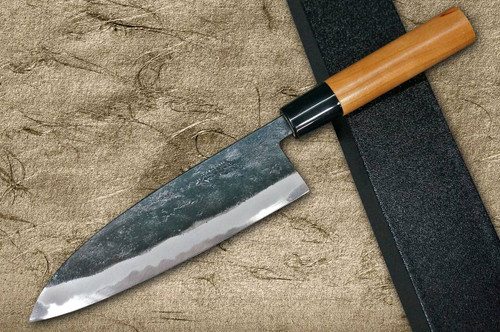
-
On Sale

-

-
On Sale
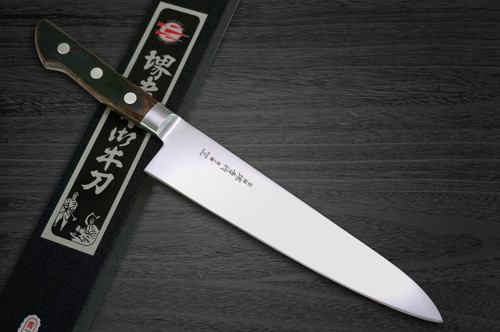
-
On Sale

-
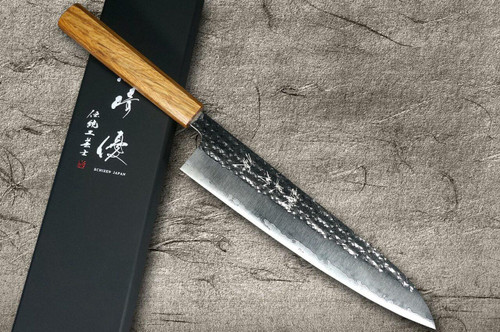
-
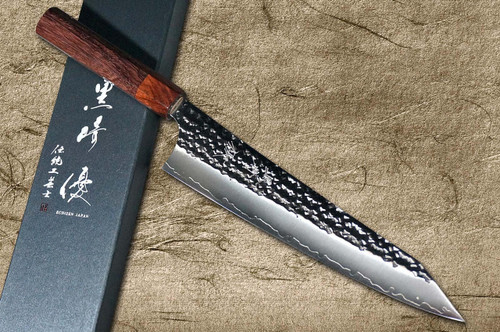
-
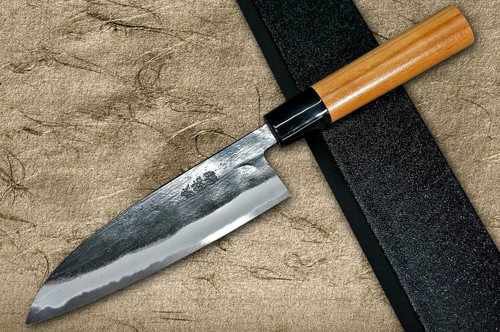
-
On Sale
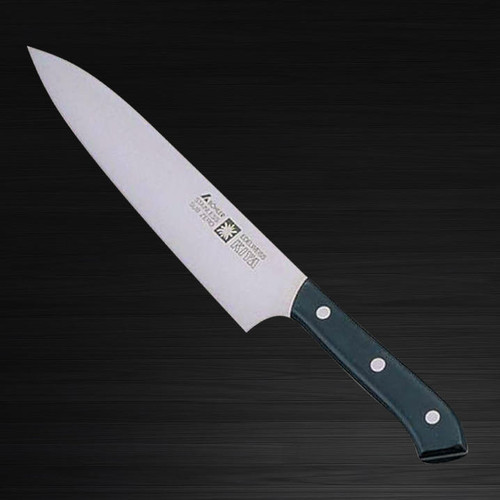
-
On Sale

-
On Sale
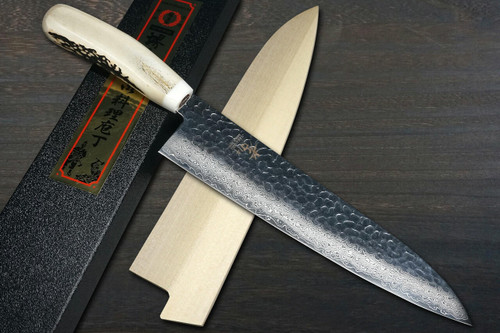
-
On Sale
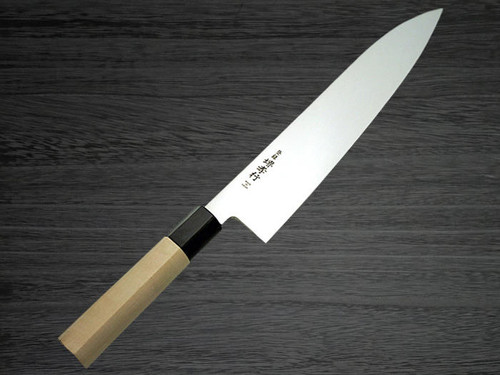
-
On Sale
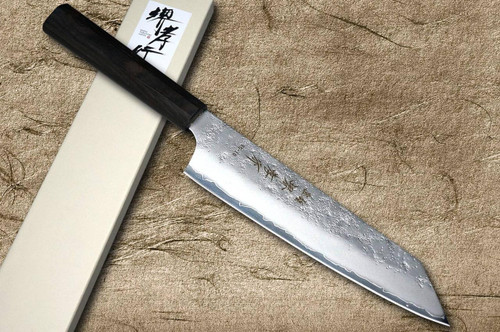
-

-
On Sale

-
On Sale

-
On Sale
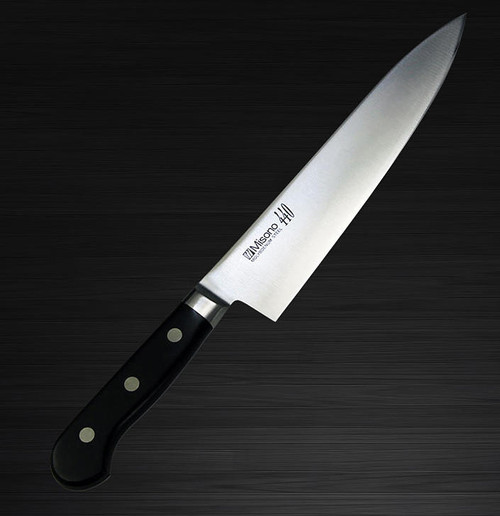
-
On Sale
![Sakai Takayuki 33-Layer VG10 Damascus Urushi Chef's Gyuto Knife 240mm with Japanese Lacquered Oak Handle [YAKIURUSHI] Sakai Takayuki 33-Layer VG10 Damascus Urushi Chef's Gyuto Knife 240mm with Japanese Lacquered Oak Handle [YAKIURUSHI]](https://cdn11.bigcommerce.com/s-attnwxa/images/stencil/500x659/products/5460/214227/sakai-takayuki-33-layer-vg10-damascus-urushi-chefs-gyuto-knife-240mm-with-japanese-lacquered-oak-handle-yakiurushi__55050.1668889987.jpg?c=2)
-
On Sale
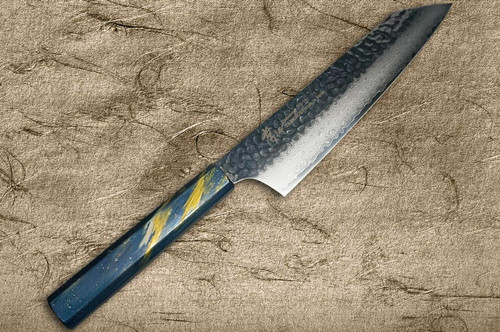
-
On Sale

-
On Sale
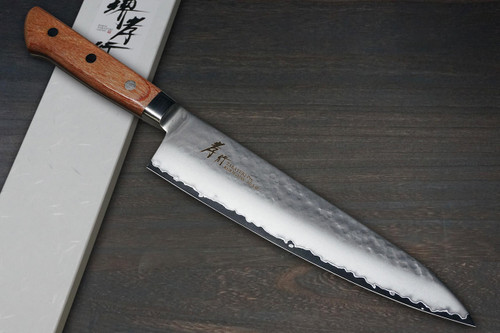
-
On Sale

-

-
On Sale
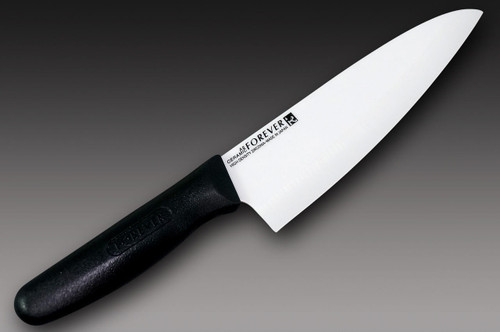
-
On Sale

-
On Sale
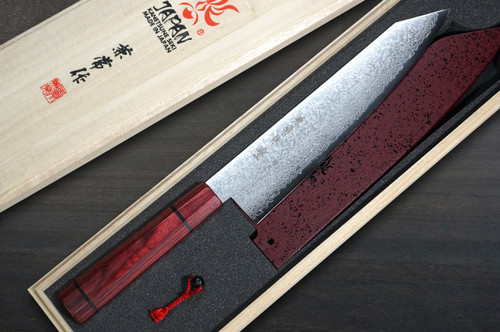
-
On Sale

-
On Sale

-
On Sale
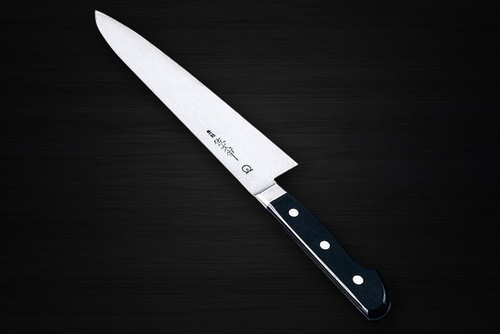
-
On Sale
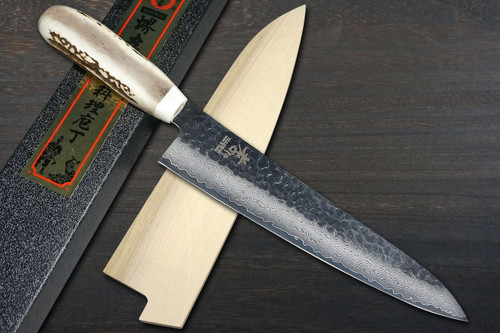
-
On Sale

-
On Sale

-
On Sale

-
On Sale

-
On Sale

-
On Sale

-
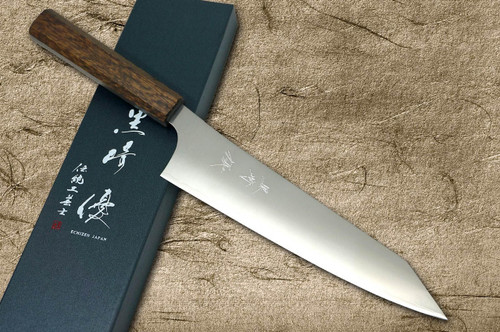
-
On Sale

-
On Sale

-
On Sale
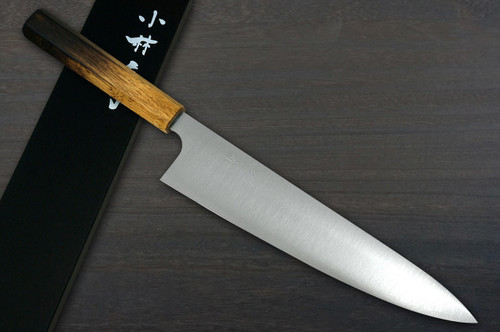
-
On Sale
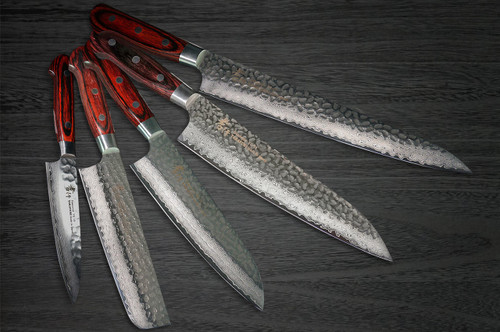
-
On Sale
![Sakai Takayuki 33-Layer VG10 Damascus Nanairo Chef's Kengata-Gyuto Knife 190mm ABS Resin Handle [Wine-Tortoiseshell] Sakai Takayuki 33-Layer VG10 Damascus Nanairo Chef's Kengata-Gyuto Knife 190mm ABS Resin Handle [Wine-Tortoiseshell]](https://cdn11.bigcommerce.com/s-attnwxa/images/stencil/500x659/products/5480/215013/sakai-takayuki-33-layer-vg10-damascus-nanairo-chefs-kengata-gyuto-knife-190mm-abs-resin-handle-wine-tortoiseshell__67266.1668976724.jpg?c=2)
-
On Sale
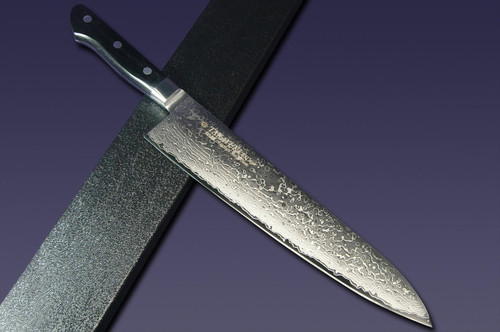
-

-
On Sale

-

-
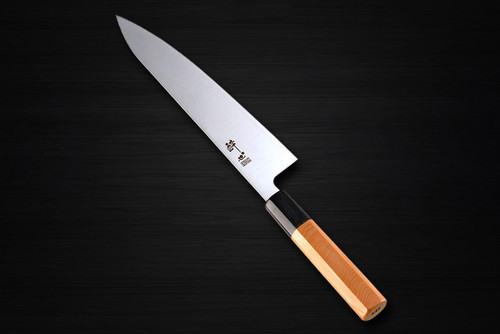
-
On Sale
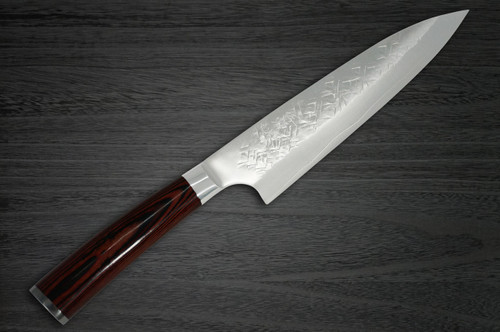
-
On Sale

-
On Sale

-
On Sale

-
On Sale
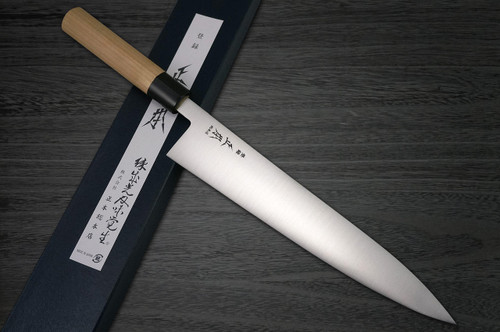
-
On Sale

-
On Sale
![Sakai Takayuki 33-Layer VG10 Damascus Nanairo Chef's Gyuto Knife 210mm ABS Resin Handle [Wine-Tortoiseshell] Sakai Takayuki 33-Layer VG10 Damascus Nanairo Chef's Gyuto Knife 210mm ABS Resin Handle [Wine-Tortoiseshell]](https://cdn11.bigcommerce.com/s-attnwxa/images/stencil/500x659/products/5478/214882/sakai-takayuki-33-layer-vg10-damascus-nanairo-chefs-gyuto-knife-210mm-abs-resin-handle-wine-tortoiseshell__77485.1668976507.jpg?c=2)
-
On Sale
![Sakai Takayuki 33-Layer VG10 Damascus Nanairo Chef's Gyuto Knife 240mm ABS Resin Handle [Blue-Tortoiseshell] Sakai Takayuki 33-Layer VG10 Damascus Nanairo Chef's Gyuto Knife 240mm ABS Resin Handle [Blue-Tortoiseshell]](https://cdn11.bigcommerce.com/s-attnwxa/images/stencil/500x659/products/5473/214883/sakai-takayuki-33-layer-vg10-damascus-nanairo-chefs-gyuto-knife-240mm-abs-resin-handle-blue-tortoiseshell__37912.1668976508.jpg?c=2)
-
On Sale
![Sakai Takayuki 33-Layer VG10 Damascus STW Chef's Gyuto Knife 240mm with Stabilized Hybrid Wood Handle [SUI] Sakai Takayuki 33-Layer VG10 Damascus STW Chef's Gyuto Knife 240mm with Stabilized Hybrid Wood Handle [SUI]](https://cdn11.bigcommerce.com/s-attnwxa/images/stencil/500x659/products/5907/229984/sakai-takayuki-33-layer-vg10-damascus-stw-chefs-gyuto-knife-240mm-with-stabilized-hybrid-wood-handle-sui__21489.1692247485.jpg?c=2)
-
On Sale

-
On Sale

-
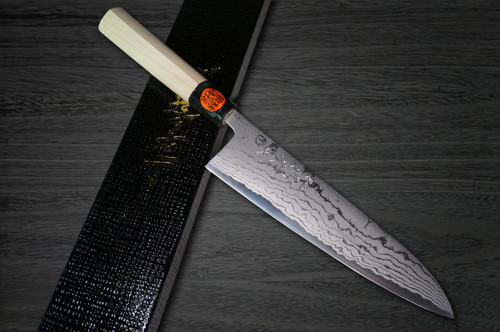
-
On Sale
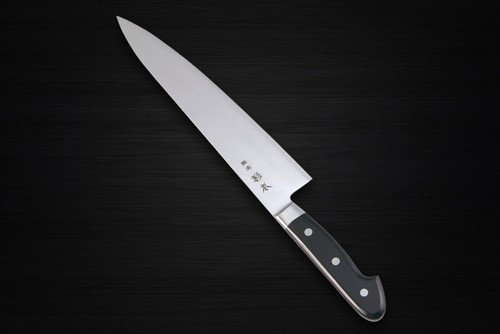
-
On Sale
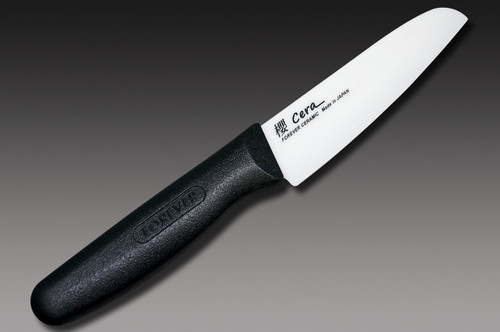
-
On Sale

-
On Sale
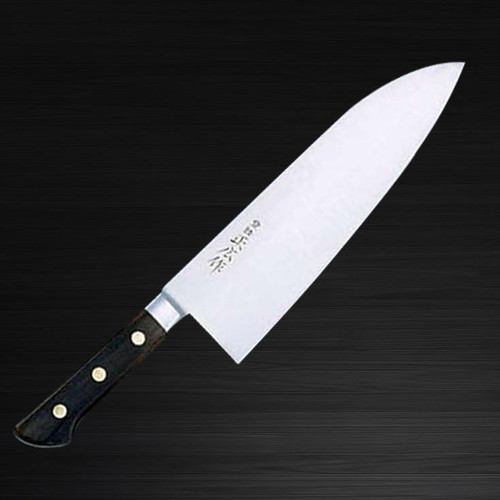
-
On Sale

-
On Sale

-
On Sale
![Sakai Takayuki 33-Layer VG10 Damascus STW Chef's Gyuto Knife 210mm with Stabilized Hybrid Wood Handle [SUI] Sakai Takayuki 33-Layer VG10 Damascus STW Chef's Gyuto Knife 210mm with Stabilized Hybrid Wood Handle [SUI]](https://cdn11.bigcommerce.com/s-attnwxa/images/stencil/500x659/products/5906/230003/sakai-takayuki-33-layer-vg10-damascus-stw-chefs-gyuto-knife-210mm-with-stabilized-hybrid-wood-handle-sui__87962.1692247505.jpg?c=2)
-
On Sale

-
On Sale
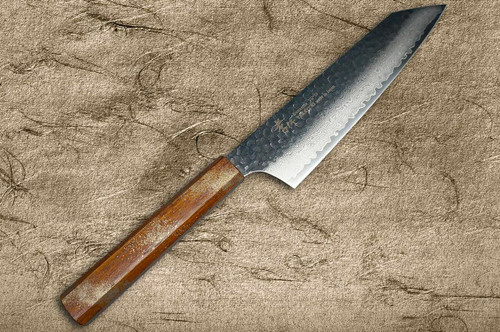
-
On Sale

-

-
On Sale

-

-
On Sale

-
On Sale
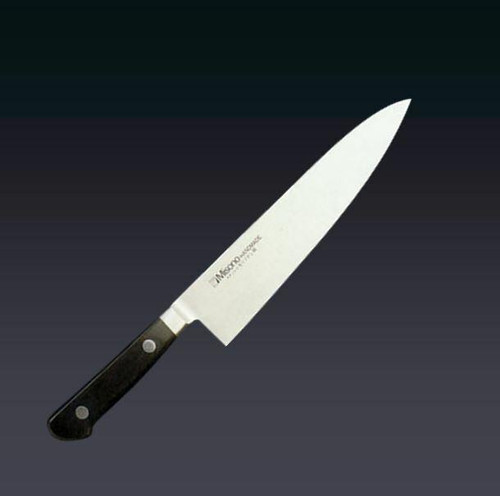
-

Top 4 Chef's Knives Recommended by Pros. Introducing Premium Tools to
Elevate Your Cooking Skills
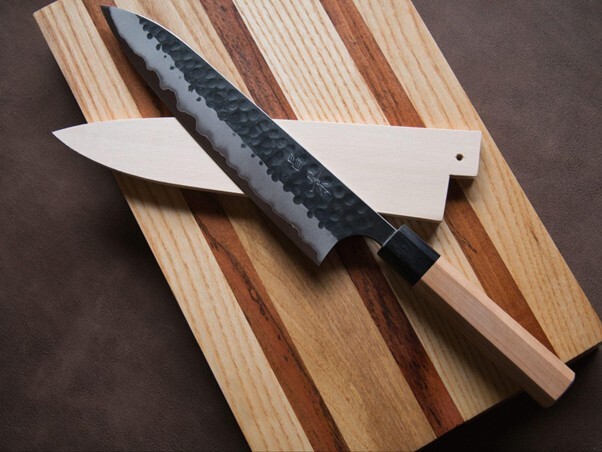
"What exactly is a Gyuto?"
"How is it different from a Santoku knife?"
"I'm not sure which chef's knife to choose…"
Do you have these concerns?
A Gyuto helps you efficiently cut a variety of ingredients, including meat, fish, and vegetables. Knowing how
to use it correctly will broaden your culinary horizons and help reduce your cooking time.
Therefore, this article explains the basics, how to choose, and how to use a Gyuto knife for those interested.
Please read to the end for recommended products and care methods.
Choosing a Gyuto (Chef's Knife)
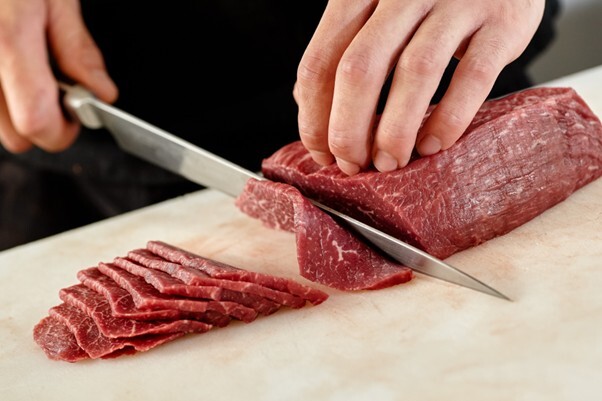
A Gyuto (Chef's Knife) is a versatile chef's knife capable of cutting various ingredients like meat, fish, and vegetables.
Its most distinctive feature is its long blade length and pointed tip. The typical
blade length ranges from 18cm to 27cm, making it longer than a Santoku knife. This extended blade allows for
efficient cutting of large ingredients.
Gyuto knives come in two types: single-bevel and double-bevel. The double-bevel type is easy to use with either hand
and is suitable for home use, while the single-bevel type offers sharper cutting performance and is preferred by
professional chefs.
Materials include stainless steel, carbon steel, and Damascus steel, allowing selection based on intended use and
budget.
Gyuto (Chef's Knife) vs. Santoku Knife
Gyuto and Santoku knives differ significantly in shape and purpose.
The main differences are summarized in the table below.
| Item | Gyuto | Santoku Knife |
|---|---|---|
| Blade Length | Approximately 18cm to 27cm | Approximately 15cm to 18cm |
| Tip Shape | Sharp point | Rounded |
| Primary use | Cutting large pieces of meat and fish | Daily use for meat, fish, and vegetables |
| Suitable for | Western cuisine, professional cooking | General home cooking |
| Ease of use | Suitable for intermediate to advanced users | Easy for beginners to handle |
| Origin | Influenced by Western cuisine | Unique Japanese Development |
The chef's knife, with its long blade, efficiently cuts large ingredients and is
favored by professional chefs. The Santoku knife, meaning "three virtues" for meat, fish, and vegetables, is
designed with household usability in mind.
The Santoku knife is easy for beginners to handle, while the Gyuto knife is recommended for those who want to make
authentic cuisine.
Choosing a Gyuto (Chef's Knife)
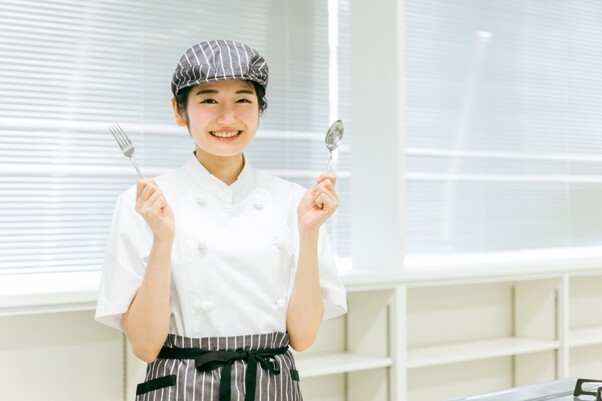
When selecting a Gyuto knife, it's important to consider five key points: blade length, type of steel, weight and balance, handle material, and your budget and intended use.
Choosing one that matches your cooking style and frequency of use will help you find
a Gyuto knife you can cherish for years.
Here's a detailed explanation of each selection criterion.
Choosing by Blade Length
NSelecting the blade length of a chef's knife is crucial based on its intended
use.
The table below summarizes the characteristics of different blade lengths.
| Blade Length | Characteristics | Suitable Uses |
|---|---|---|
| 18cm–21cm | Easy to handle, ideal for home use | Daily cooking, smaller ingredients |
| 21cm–24cm | Well-balanced | Versatile for home and professional use |
| 24cm–27cm | Handles large ingredients | Handling large cuts of meat or whole fish |
For home use, 18cm to 21cm is easy to handle. For serious cooking, 21cm to 24cm is recommended. If you frequently handle large ingredients, choose 24cm or larger.
Choosing by steel type
Chef’s knives primarily use three types of steel: stainless steel, carbon steel, and Damascus steel.
| Steel Material | Sharpness | Maintenance | Price | Characteristics |
|---|---|---|---|---|
| Stainless Steel | Good | Easy | Affordable | Rust-resistant and beginner-friendly |
| Steel | Very good | Somewhat labor-intensive | Moderate | Exceptional sharpness, easy to sharpen |
| Damascus steel | Very good | Some effort | High | Beautiful patterns, premium feel |
For beginners, stainless steel is recommended for its easy maintenance. Those prioritizing sharpness should choose steel, while those seeking both appearance and performance should opt for Damascus steel.
Choose based on weight and balance
Chef’s knives primarily use three types of steel: stainless steel, carbon steel, and Damascus steel.
The weight and balance of a chef's knife significantly impact its feel in use.
A chef's knife with moderate weight allows you to leverage its own weight when cutting ingredients, enabling effortless slicing. Conversely, a knife that is too light can strain your wrist.
egarding balance, knives with the center of gravity between the blade and handle positioned closer to the handle end are easier to handle. It's crucial to actually hold the knife to check its weight and balance.
For extended use, selecting a weight and balance that feels comfortable in your hand can reduce fatigue.
Choosing by Handle Material and Grip Comfort
The handle material and shape are crucial factors directly affecting ease of use.
| Material | Characteristics | Advantages | Disadvantages |
|---|---|---|---|
| Wood | Warm and inviting | Comfortable to hold | Prone to deterioration from moisture |
| Resin | Lightweight and hygienic | Easy to maintain | May be slippery |
| Stainless steel | Hygienic one-piece design | Highly durable | Can feel cold |
For ease of grip, it's important to choose a thickness and shape that fits your hand size. Handles with slip-resistant finishes or shapes that secure finger placement also enhance safety.
Choose based on budget and purpose
When selecting a chef's knife, it's important to balance your budget with intended use.
| Price Range | Features | Suitable Uses |
|---|---|---|
| Under USD40 | Entry-Level Models | Beginners wanting to try a chef's knife |
| USD40– USD120 | For Intermediate Users | Serious home cooking |
| USD120 and the above | Professional-grade/high-end | Professional chefs and enthusiasts |
For home use, you can find a high-quality chef's knife with sufficient performance in the USD40 (¥6,000) to USD120 (¥18,000) price range. Professional chefs or those passionate about cooking should consider premium items priced above USD120 (¥18,000).
When purchasing your first chef's knife, we recommend starting with an affordable option and upgrading to a higher-end model once you've gained experience.
Gyuto (Chef's Knife): Usage by Ingredient
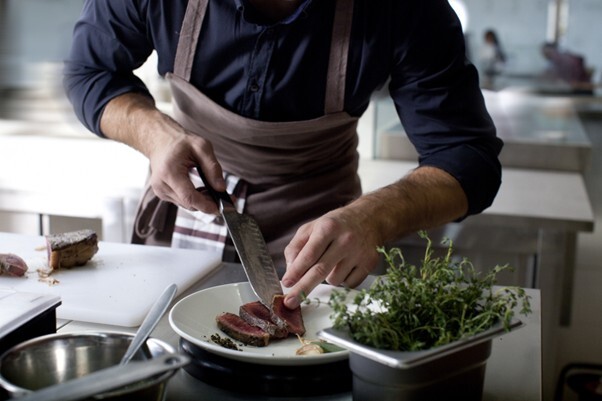
While the Gyuto knife is a versatile tool suitable for various ingredients, each food type has its optimal handling method.
Understanding the characteristics of meat, vegetables, and fish, and mastering the correct techniques, allows you to maximize the performance of your Gyuto knife. Learn the basic uses and tips for each ingredient to aim for efficient and safe cooking.
When Cutting Meat
When cutting meat with a chef's knife, it's crucial to be mindful of the grain direction.
Cutting perpendicular to the grain results in a tender, easy-to-eat texture. The key is to utilize the long blade of the chef's knife to slice through in one smooth motion.
For thick cuts of meat, use the entire blade to slowly advance the cut. For thin slices, angle the blade and slice thinly. When cutting fatty parts, where the blade tends to slip, firmly press down on the meat.
When cutting vegetables
When cutting vegetables with a chef's knife, the key is to adjust your technique based on the vegetable's hardness and shape.
For hard root vegetables, use the weight of the knife to push down and cut. For soft vegetables, utilize the sharpness of the blade to pull and slice.
For hard vegetables like carrots or daikon radish, use the entire blade. For soft vegetables like tomatoes or onions, use the tip of the blade.
For detailed work like julienning, be sure to curl your fingers tightly to avoid contact with the knife.
When preparing fish
When preparing fish with a chef's knife, it's crucial to use the blade appropriately according to the fish's size and part.
For large fish, utilize the long blade of the chef's knife to cut in one smooth motion, resulting in a clean cross-section.
For filleting, remove the head, open the belly to remove the innards, then insert the blade along the backbone. When skinning fish, lay the blade flat, insert it between the skin and flesh, and pull the skin while making small, quick movements with the blade. Fish can be slippery, so it's important to stabilize it by placing a dishcloth on the cutting board.
Care Instructions for Gyuto (Chef's Knife)
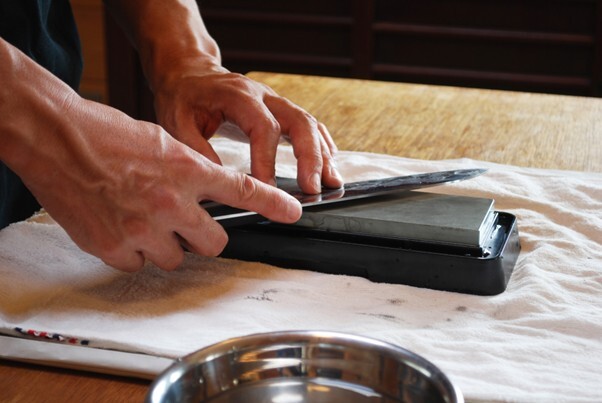
Proper care is essential to maintain the performance of your Gyuto knife for a long time.
Proper maintenance preserves sharpness and prevents rust and deterioration. Follow these 5 steps to care for your Gyuto knife. Making daily maintenance a habit ensures long-term use.
STEP 1: Rinse with water immediately after use
It is crucial to wash your chef's knife with water immediately after use.
Leaving food residue or oils on the blade can cause rust and odors. Gently wash it using a neutral detergent, avoiding abrasive sponges. When cleaning the blade, use the soft side of the sponge and be careful not to cut yourself. Warm water helps remove grime more easily, but avoid excessively hot water; we recommend washing with lukewarm water around 40°C (104°F).
STEP 2: Wipe off moisture with a soft cloth
After washing, thoroughly wipe away all moisture with a soft cloth or towel.
Leaving water droplets behind can cause rust, so it's important to wipe carefully from the blade to the handle. Pay special attention to the junction between the blade and handle, as moisture tends to linger there. Using a microfiber cloth allows for thorough absorption of moisture. When wiping, be mindful of the blade's orientation to avoid cutting yourself.
STEP 3: Dry Thoroughly, Avoiding Moisture
After wiping away moisture, it's crucial to ensure the knife is completely dry.
Storing it in humid places or sealed drawers increases the risk of rust. Allow it to air dry naturally in a well-ventilated area until all moisture has evaporated. Even if you're in a hurry, avoid using hot air from a hair dryer or similar devices, as this can damage the blade. If you suspect it's not completely dry, wipe it again with a dry cloth before storing.
STEP 4: Sharpen regularly with a whetstone
To maintain the sharpness of your chef's knife, regular sharpening is essential.
For typical home use, we recommend sharpening with a whetstone about once or twice a month. Use a medium-grit whetstone (1000-3000 grit) and sharpen the entire edge while maintaining a consistent angle. The sharpening angle should be around 15-20 degrees for single-bevel knives and about 15 degrees per side for double-bevel knives. If unsure how to sharpen, consider using a maintenance service at a specialty store.
STEP 5: Store in a Well-Ventilated Area
Choose a storage location for your chef's knife that is well-ventilated and low in humidity.
Using a knife stand or magnetic knife holder allows safe storage without the blade touching other utensils. If storing in a drawer, protect the blade with a blade guard or sheath. Avoid direct sunlight and high humidity; storing in a stable environment with minimal temperature fluctuations is crucial. For long-term storage, lightly oil the blade to prevent rust.
Top-Selling Gyuto (Chef's Knife)

Here is a ranking of the best-selling Gyuto knives on our site.
Popular Gyuto knives share five main characteristics.
- 1st Place: Iseya I Series 33-Layer VG-10 Damascus Hammered Finish Japanese-Style Chef's Knife 210mm
- 2nd Place: Sakai Takayuki 33-Layer VG10 Damascus Steel Hammered Finish Gyuto Knife 210mm
- 3rd Place: Sakai Takayuki Aogami Super Black Hammered Finish WA Japanese Knife Sword-Shaped Chef's Knife 190mm
- 4th: Fujijiro DP 3-Layer Steel VG10 Chef's Knife 210mm
We'll explain the features and reasons for their popularity in detail.
1st Place: Iseya I Series 33-Layer Damascus Chef's Knife
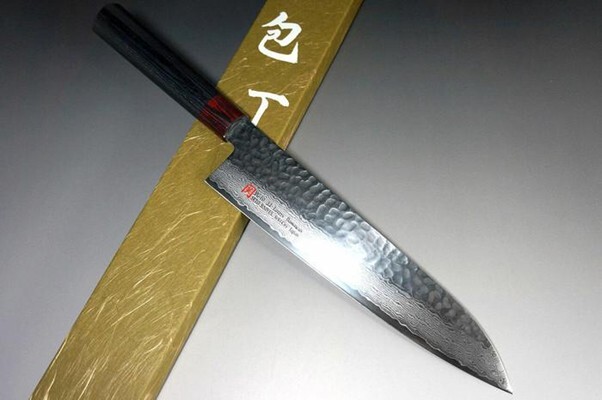
The Iseya I Series is a professional-grade chef's knife featuring a beautiful 33-layer Damascus hammered finish.
It uses VG-10 stainless steel as the core material, achieving excellent rust resistance and sharp cutting performance. The D-shaped black plywood handle features bamboo carvings, combining a premium feel with beauty. The hammered finish blade allows food to release easily, enabling smooth cooking. Weighing only 175g, it is lightweight and easy to handle, and boasts excellent edge retention with a hardness of 60-61 HRC.
Recommended for:
- People who love posting photos of their cooking on social media
- Those who value visual appeal but absolutely refuse to compromise on sharpness
Product Page:HOCHO KNIFE|Iseya I Series 33-Layer VG-10 Damascus Hammered Finish Japanese Chef's Knife 210mm
2nd Place: Sakai Takayuki 33-Layer Damascus Chef's Knife
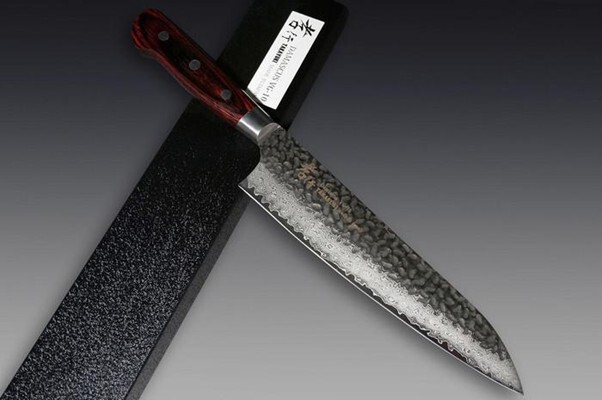
The Sakai Takayuki 33-Layer Damascus Chef's Knife, crafted from multi-layer VG10 stainless steel, achieves an exceptionally sharp edge and excellent edge retention with a hardness of 60-61 HRC. The mahogany handle offers superior water resistance and features beautiful wood grain. Hand-sharpened, it guarantees peak cutting performance right out of the box. Its light center balance minimizes fatigue during extended use.
Recommended for:
- Those who admire Japanese craftsmanship
- Lovers of Japanese cuisine who believe "A knife is a traditional Sakai brand!"
Product Page:HOCHO KNIFE|Sakai Takayuki 33-Layer VG10 Damascus Steel Hammered Finish Chef's Knife 210mm
3rd Place: Sakai Takayuki Aogami Super Black Hammered Finish Chef's Knife
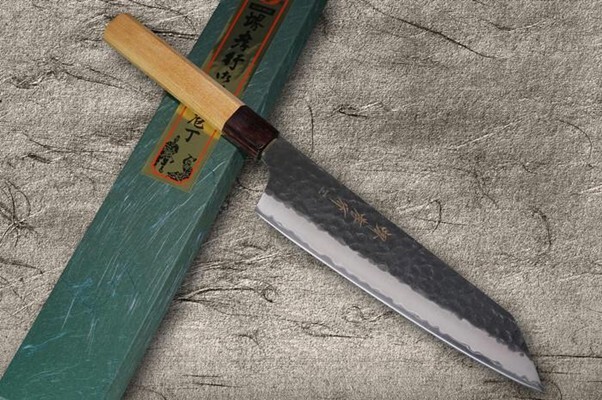
The Sakai Takayuki Aogami Super Clad is an authentic Japanese knife characterized by its high hardness of approximately 65 HRC.
Featuring a blue paper super steel core and a beautiful black hammered finish, it delivers exceptional edge retention. The half-round octagonal zelkova wood handle evokes Japanese tradition, while the mahogany bolster enhances durability. Its user-friendly 190mm size and lightweight 150g design are appealing. The sword-shaped blade offers superb cutting performance, suitable even for delicate tasks.
Recommended for:
- Those whoseache wrists when using heavy knives
- Those who absolutely want a sharp, professional-grade chef's knife
Product Page:HOCHO KNIFE|Sakai Takayuki Aozumi Super Black Tsuchi-me WA Japanese Knife Sword-Shaped Chef's Knife 190mm
4th Place: Fujijiro DP 3-Layer Steel Chef's Knife
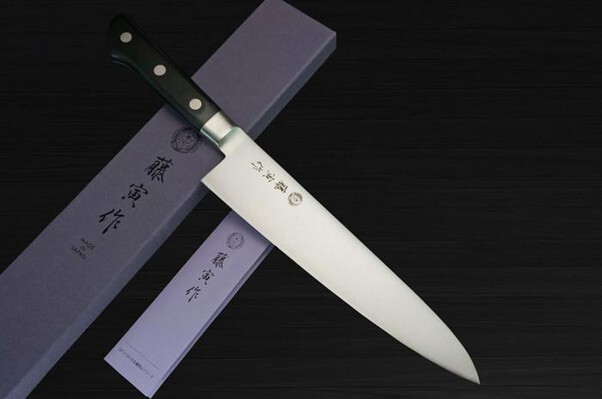
The Fujijiro DP series is a best-selling model known as the pioneer of 3-layer stainless steel handles.
Its 3-layer construction—a VG-10 stainless steel core sandwiched between softer stainless steel layers—balances ease of sharpening with exceptional cutting performance. The combination of a Black Stamina wood handle and stainless steel bolster delivers outstanding value for the price. It's the most popular choice among home cooks, prized for its versatility in handling a wide range of tasks.
Recommended for:
- Those wanting to improve their cooking skills and seeking a quality chef's knife
- Those thinking, "Spending tens of thousands of yen on a knife right away is a bit much...
Product Page:HOCHO KNIFE|Fujijiro (Fujitora) DP 3-Layer Steel VG10 Chef's Knife 210mm



